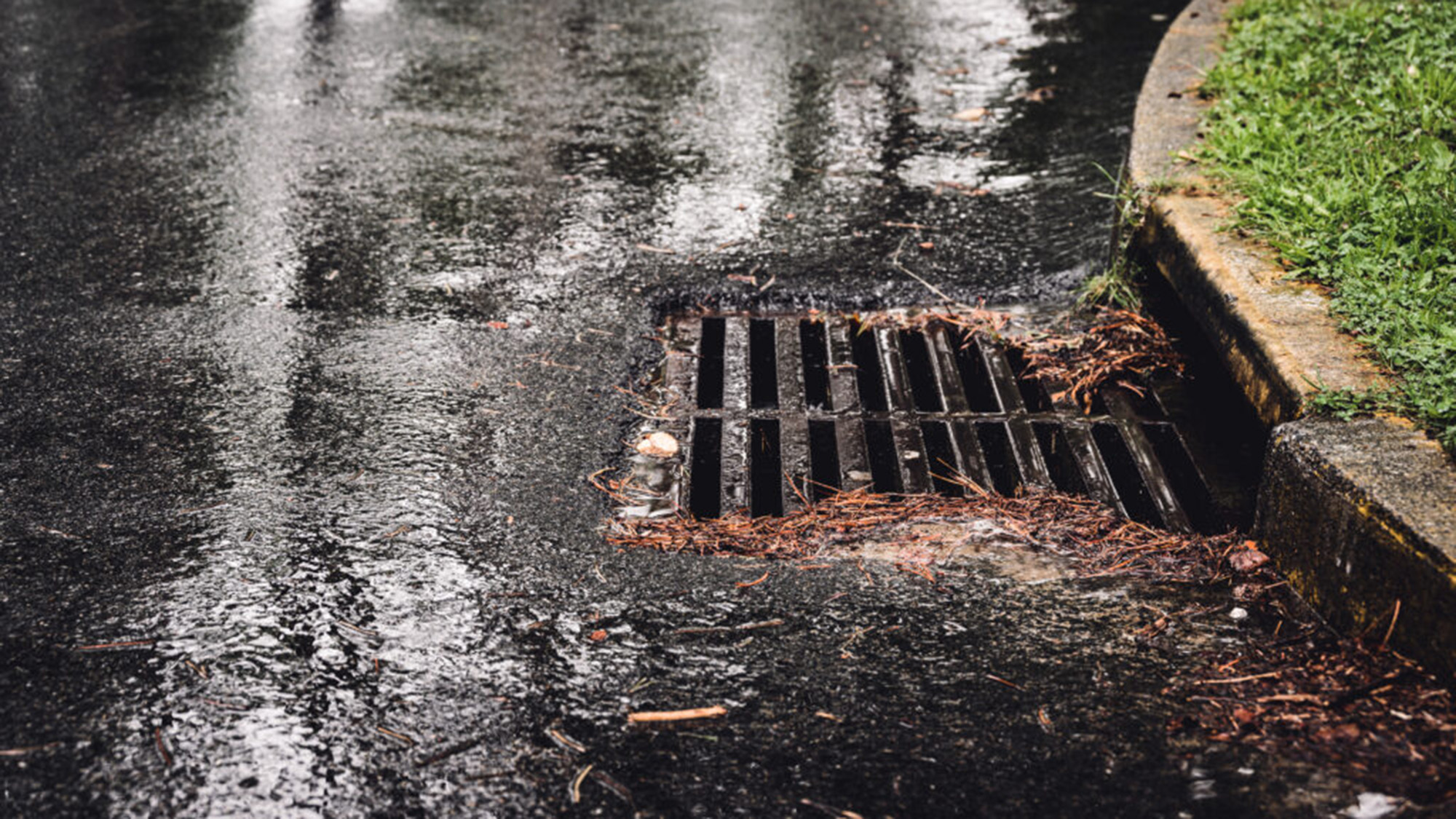March 31, 2025
It’s all in vain if you don’t maintain

When it comes to stormwater treatment, much emphasis is given to performance. Testing verification and protocols such as New Jersey’s NJCAT and Washington’s TAPE assess the pollutant removal rates of stormwater separators and filters, and they provide valuable like-for-like comparisons that assist engineers in specifying the most effective treatment solution for the site.
However, the stated performance of any system is contingent on the operating condition of that system.
The Prussian general Helmuth von Moltke once suggested that “no plan survives first contact with the enemy”, and I think a similar principle may be applied here: no unmaintained stormwater treatment system survives extended contact with the real world.
What do I mean by that? Simply put, a typical surface water treatment system is designed to capture and remove pollutant materials from stormwater. This ranges from trash and gross solids to nutrients, heavy metals and hydrocarbons, all while having defined storage capacity for these materials. If left unattended, it will eventually fill and its capacity to store pollutants will be lost. Its performance will drop to zero, and it could eventually create a flood risk by preventing water from flowing at all.
All stormwater systems need to be maintained—green or grey, natural or engineered—and ironically, the better the system performs, the faster it will fill up.
So while performance is the fundamental characteristic of any stormwater treatment system, without regular maintenance, that performance eventually means nothing.
Maintenance is a shared responsibility
Responsibility for the operation and maintenance of a surface water treatment system ultimately lies with the site owner, but they are often unaware that they even own such a system.
The consultants, design engineers and contractors who deliver the project are custodians of the site before and during development, and as such they share a duty to ensure that the site that they pass on meets all necessary regulations—now and in the future.
Engineers in particular are uniquely placed to position a site for long-term environmental compliance. The lifetime of a stormwater treatment system is measured in decades, so the selection of that system will determine how effectively stormwater is managed on the site for many years.
The engineer has a delicate task, having to balance client expectations against regulatory compliance and cost effectiveness against performance. It would be easy to sacrifice long-term performance for short-term benefit. Fortunately, however, modern systems such as the Hydro-Shield™ Advance hydrodynamic separator are increasingly engineered to operate in a sweet spot that provides affordable high-performance treatment with quick, easy maintenance.
Contractors also bear responsibility for handing over a site that is optimized for effective long-term stormwater management, and they can benefit from doing so. More and more construction companies are recognizing that sustainable development and environmental stewardship are valued by shareholders, employees and the communities in which they live and work. Demonstrating that procurement decisions have been made with sustainability in mind has both environmental and commercial benefits.
What to consider to maximize stormwater treatment operating efficiency
Maintenance is often thought of as a post-install responsibility, but engineers and project owners should keep operating efficiency and system lifetimes in mind from the very start.
Good project operation and efficient maintenance begin with design and continue through installation, and these aspects are influenced by decisions made and actions taken early on in the project.
Adopting the following three principles at early and intermediate stages of the project will help to maximize the operating efficiency of the stormwater treatment systems for the lifetime of the site development.
Design for maintenance
Stormwater regulations persist for the lifetime of the site, so engineers should optimize the design of the site so that the site owner is enabled and empowered to remain compliant with regulations and protect the local environment from surface water pollution for the lifetime of the site development.
Clearly engineers approach the design process with regulations and performance at front of mind, but optimizing for lifetime performance means going beyond that. Not only should the stormwater management systems themselves be quick, easy and safe to maintain, but the site overall should accommodate maintenance in a way that does not impinge on that.
Site features and components should improve—or at the very least not hinder—access for ongoing maintenance. Vehicle access should be safe and secure, for example, and wherever possible, maintenance access points should be sited in such a way that maintenance vehicles do not block or impede road users or pedestrians.
Safety should also be paramount. Maintenance work can be risky, so particular attention should be paid to systems and features that remove, minimize or mitigate risk to maintenance workers and the public. Access to stormwater systems should be quick and simple, and engineers should prioritize systems that limit the time that maintenance personnel spend in confined spaces or operating machinery. Ease and speed of maintenance are key.
Develop an effective maintenance plan
Site plans governing the operation and maintenance of surface water management systems on site are an essential tool for the owner, engineer and contractor alike—and in fact may be required by local planning regulations.
As part of the site development process, the engineer and contractor should develop a maintenance plan or operation and maintenance (O&M) manual. This document will provide site owners with all the information that they need in order to monitor, clean, repair or replace any parts of their stormwater management system necessary to remain compliant.
Indeed, the EPA recommends that any stormwater maintenance plan clearly defines who is responsible for maintenance, what maintenance activities are required and how frequently they are carried out, what level of funding is required, and so on. Individual states may also provide their own recommendations or templates based on local requirements.
The plan should provide a site owner with all necessary information required to inspect, operate and maintain stormwater management infrastructure. This should include maintenance requirements for component parts, schedules for inspections and site visits and instructions on how to report and record repairs.
The plan can also help the owner budget for the required maintenance, to prevent any financial surprises down the line. Most manufactured treatment devices have O&M manuals that can form the basis for such a plan.
This plan should form part of a site handover, giving owners a clear step-by-step guide to maximizing system performance and operating efficiency for the duration of its lifetime.
Use handover as an opportunity to add value
Stormwater treatment systems are often one of the first components of a development to be installed, sometimes a number of years before completion of the overall project. Typically they are underground, and the owner is likely to be distanced from the project due to there being a substantial number of other parties involved. When it comes time to take ownership of the site they are likely to have a range of other competing priorities.
As the subject-matter experts, prior to and during handover, consultants and designers should take the opportunity to underline to the owner the importance of carrying out the correct maintenance of the system. Proper maintenance supports both the expected performance and lifespan of the system.
Site owners are likely not to be experts in stormwater management, so engineers can provide value by educating the owner on the need for maintenance. They can recommend that maintenance be overseen or carried out by a party with knowledge or expertise of stormwater management.
They may also advise that the equipment manufacturer provide expert inspections for an initial period while the site owner manages a newly completed project. We recommend scheduling regular inspections on stormwater treatment systems for a minimum of two years after installation.
Finally, it is common for systems to be “lost” after construction, and for owners to be completely unaware of them. Owners and regulatory inspectors rarely own the original drawings and plans. Engineers can benefit all involved by pushing for all installed systems to be captured in a geographic information system (GIS) to eliminate this knowledge gap and aid in regulatory compliance.
Conclusion
Undertaking the correct maintenance program is the most cost-effective long-term approach for the site owner. Maintaining the stormwater treatment systems installed on their site helps the owner to avoid costly fines, bad publicity and legal issues resulting from non-compliance with regulations.
By outlining these risks and helping the owner to plan to mitigate them, engineers provide additional value to clients, partners, and the public and position themselves to win further business.
Learn more about our stormwater maintenance services: https://oldcastleinfrastructure.com/maintenance-infrastructure-services



